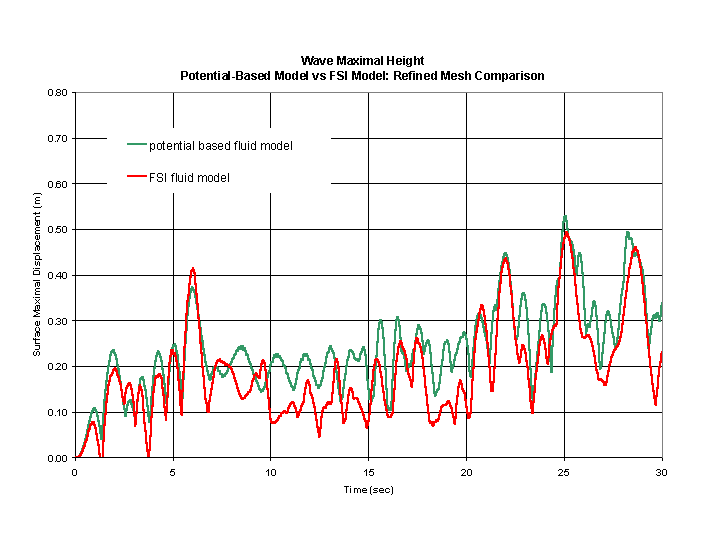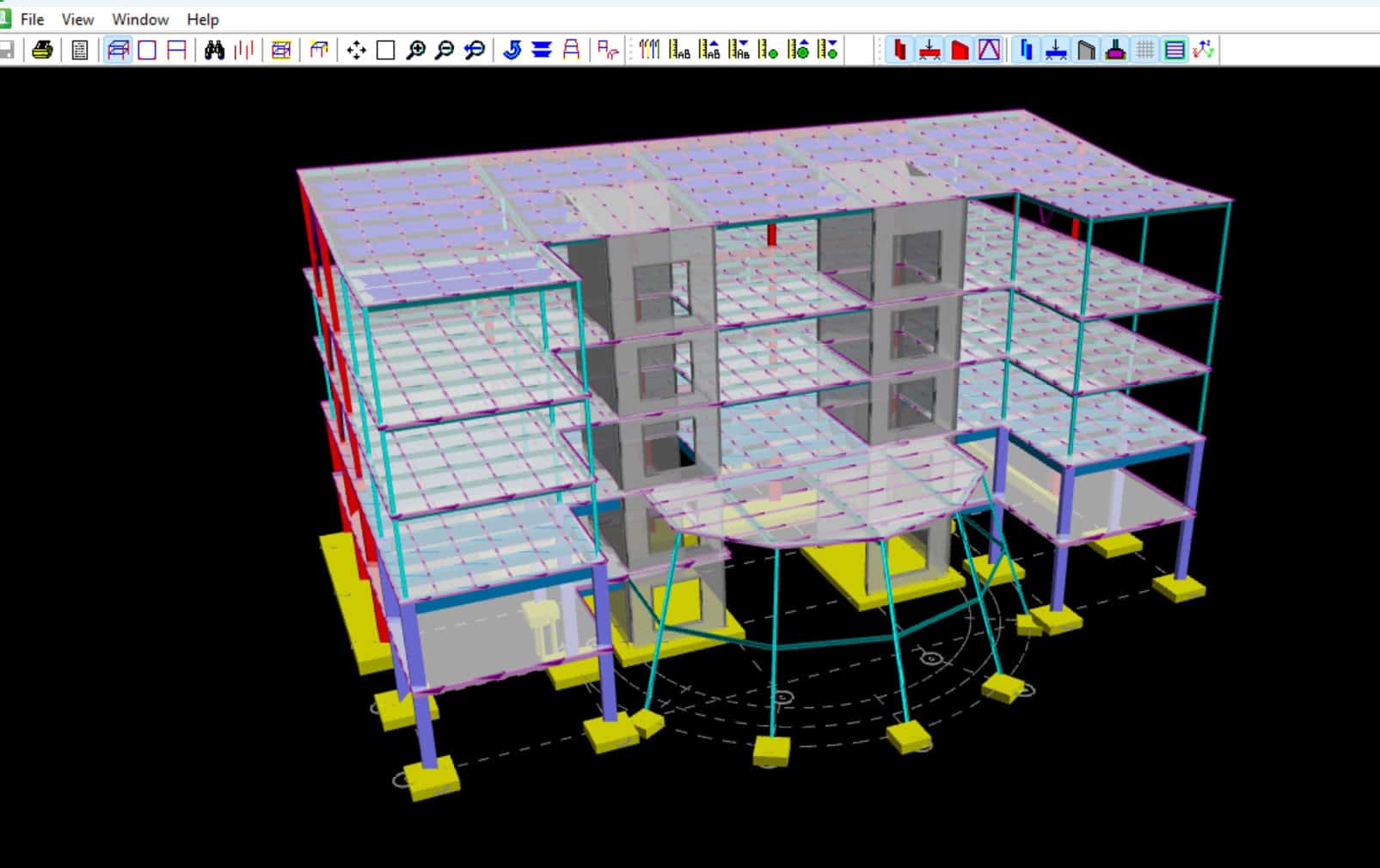In civil engineering design and analysis, the effects of fluids on the motion of structures can be very important. This is particularly true in seismic analysis of liquid storage tanks. In this class of problems, the fluid and tank motions are not large, and the viscosity of the fluid usually can be neglected. The important fluid characteristics that need to be included are the fluid density and compressibility, the bulk fluid motions and the pressures transmitted to the structure (both static and dynamic).
For these problems, the potential-based fluid elements of ADINA are the most efficient way to model the fluid. The elements have only one degree of freedom per node, the fluid potential degree of freedom. Keeping the number of degrees of freedom down is crucial, because the model of the tank structure itself can be large. The potential-based fluid formulation is linear. Therefore, when the potential-based fluid elements are included, they do not cause any additional convergence problems.

Some analysis experiences on these problems have been obtained by SC Solutions for ExxonMobil’s proprietary modular LNG storage tank, which was subjected to an earthquake. The results below are shown courtesy of SC Solutions, Inc. and ExxonMobil Upstream Research Company.
One quantity of interest is the maximum wave height because sloshing impact on the tank roof can potentially result in severe tank damage and should be avoided or carefully considered in the design.
As a comparison, the same model of the tank was run using the Navier-Stokes fluid elements of ADINA-FSI. The maximum wave heights were compared in the two models, see below. Both models gave similar maximum wave heights, but the model using potential-based elements requires of course, for this analysis, much less computation time. This underlines the importance of considering the use of the potential-based elements in ADINA for the analysis of fluid-structure interactions.
Figure 2: Comparison between Potential-Based Fluid Element and Navier-Stokes FSI approaches
Keywords:
Water, advanced analysis, ADINA, Energy, Potential-based fluid





